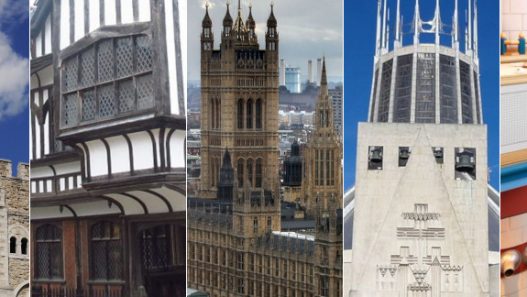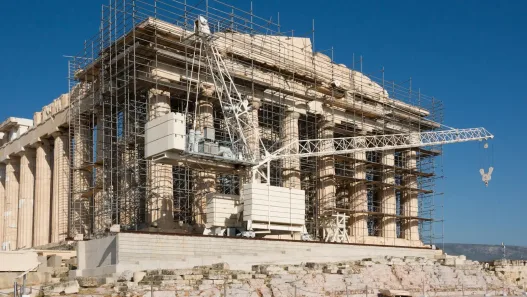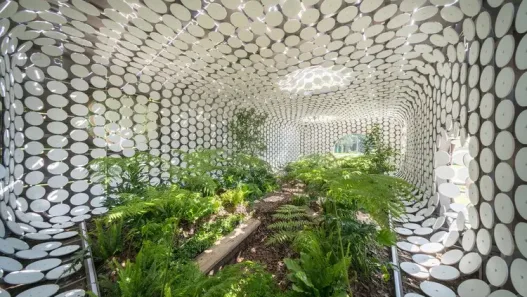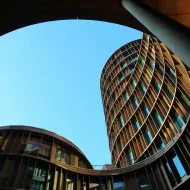The iconic heart of the Games, Olympic stadiums are much more than sporting venues. They are symbols of athletic achievement, cultural exchange and national pride. This chapter analyses the purpose, historical development, design features and global trends of Olympic stadiums.

Defining Olympic Stadiums: Purpose and Significance
Olympic stadiums are purpose-built arenas designed to host opening and closing ceremonies, track and field events and other athletics competitions during the Olympic Games. They serve as the focal point of the Games, embodying the spirit of athletic excellence, international co-operation and the pursuit of human potential.
Beyond their sporting function, Olympic stadiums have enormous cultural and symbolic significance. Representing the culmination of years of planning, construction and national endeavour, these stadiums are a testament to a nation’s ambition and determination to host the world’s greatest sporting event.
Historical Context of Olympic Stadiums: An Evolution Timeline
The evolution of Olympic stadiums reflects the changing landscape of sport and architecture:
- Ancient Greece: The first Olympic Games were held in Olympia, Greece, in a stadium built in 776 BC. This stadium, a simple earthen structure, served as a model for future Olympic venues.
- Modern Era: The first modern Olympic Games in 1896 were held in Athens, Greece, in a newly built stadium incorporating elements of ancient Greek architecture.
- 20. Century: The 20th century saw the construction of increasingly large and technologically advanced Olympic stadiums, such as the iconic Wembley Stadium in London (1923) and the Maracanã Stadium in Rio de Janeiro (1950).
- 21st Century: The 21st century has witnessed a shift towards more sustainable and innovative Olympic stadium designs with a focus on the integration of technology, accessibility and environmental considerations.
Basic Features of Olympic Stadium Design: Functionality and Aesthetics
Olympic stadium design prioritises functionality and aesthetics, balancing the needs of athletes, spectators and the surrounding community:
- Capacity: Olympic stadiums must accommodate large crowds, typically ranging from 50,000 to 100,000 spectators.
- Accessibility: Accessible seating, ramps and toilets are essential to ensure inclusivity for all spectators.
- Visibility: Clear sight lines from all seating areas are essential for optimal viewing of events.
- Sustainability: Modern Olympic stadiums incorporate sustainable design features such as renewable energy sources, water conservation and recycled materials.
- Aesthetics: Olympic stadiums are often designed with a distinctive architectural style that reflects the culture and history of the host city.
The Role of Olympic Stadiums in Promoting National Identity
Olympic stadiums play an important role in promoting national identity and fostering a sense of pride among the host nation:
- Symbol of National Achievement: The construction of a world-class Olympic stadium is a testament to a nation’s ambition and determination to host a successful Games.
- Cultural Showcase: Olympic stadiums often incorporate elements of local culture and history, showcasing a nation’s heritage to the world.
- Legacy Project: Olympic stadiums are often designed to have a lasting legacy and serve as community centres, sports facilities or cultural venues after the Games.
Global Trends in Olympic Stadium Design
Global trends in Olympic stadium design reflect an increasing emphasis on sustainability, innovation and inclusiveness:
- Sustainable Design: The use of renewable energy sources, water conservation and recycled materials in Olympic stadium design is becoming increasingly common.
- Technology Integration: Smart building technologies such as automated lighting controls and energy management systems are being incorporated to increase efficiency and sustainability.
- Accessibility: Designing stadiums to be accessible to people with disabilities is becoming a priority to ensure inclusivity for all spectators.
- Multi-Purpose Venues: Increasingly, Olympic stadiums are being designed as multi-purpose venues capable of hosting a variety of events beyond the Games.
Olympic stadiums are much more than sports arenas; they are architectural marvels that embody the spirit of the Games and leave a lasting legacy on the host city and the world. As the Games continue to evolve, the design of Olympic stadiums will evolve to reflect the changing landscape of sport, technology and culture.
Architectural Innovations in Olympic Stadiums: Pushing the Boundaries of Design
Olympic stadiums have always been at the forefront of architectural innovation, showcasing the latest design and engineering solutions. This section explores some of the most significant innovations that have transformed the way we think about and build these iconic venues.
Structural Engineering: Advances in Design and Construction
Structural engineering plays a crucial role in the creation of the large-scale and complex geometries of Olympic stadiums. Recent developments have led to
- Lightweight Materials: The use of lightweight materials such as steel and reinforced concrete allows the construction of larger and more complex structures while minimising environmental impact.
- Innovative Roof Designs:Innovative roof designs such as retractable roofs and tensioned membrane structures provide flexibility and weather protection for spectators.
- Advanced Construction Techniques: Advanced construction techniques such as prefabrication and modular construction allow for faster and more efficient construction processes.
Sustainable Design: Integrating Environmentally Friendly Practices
Sustainability is becoming increasingly important in Olympic stadium design, with a focus on minimising environmental impact and creating healthier spaces:
- Renewable Energy Sources: Integrating renewable energy sources such as solar panels, wind turbines and geothermal systems to reduce dependence on fossil fuels.
- Water Conservation: Implement water-saving fixtures, rainwater harvesting systems and drought-tolerant landscaping to reduce water use.
- Recycled Materials: Use recycled materials such as steel and concrete to reduce waste and promote a circular economy.
- Green Roofs and Walls: Installing green roofs and walls to provide insulation, reduce stormwater runoff and create green spaces.
Technological Integration: Enhancing the Audience Experience
Technology is transforming the spectator experience in Olympic stadiums, creating more immersive and interactive environments:
- High Definition Screens: Large, high definition screens enhance the viewing experience by providing a clear view of the action from all seating areas.
- Mobile Apps: Mobile apps provide real-time updates, event programmes and interactive maps, enhancing audience convenience and access to information.
- Wi-Fi Connect ivity: High-speed Wi-Fi connectivity allows spectators to stay connected and share their experiences on social media.
- Augmented Reality (AR): AR technology can enhance the audience experience by overlaying digital information over a real-world view, providing interactive information and entertainment.
Adaptive Reuse: Transforming Olympic Venues for Future Use
Olympic stadiums are often designed with a focus on adaptive reuse, ensuring their long-term viability and legacy after the Games:
- Multi-Purpose Venues: Olympic stadiums are increasingly being designed as multi-purpose venues that can host a variety of events such as concerts, conferences and sporting events.
- Community Centres: Some Olympic stadiums are being converted into community centres, providing recreational facilities, sports fields and public spaces for local residents.
- Cultural Venues: Olympic stadiums can be adapted for cultural events such as art exhibitions, theatre performances and music festivals.
Architectural innovations in Olympic stadiums are pushing the boundaries of design, engineering and sustainability. These developments not only create spectacular venues for the Games, but also contribute to a more sustainable and engaging experience for athletes, spectators and the host community.
The Economic Impact of Olympic Stadiums: Balancing Costs and Benefits
The construction of an Olympic stadium is a major investment, often involving billions of dollars. Whilst the financial impacts are significant, the potential economic benefits can also be substantial, creating a complex interaction of costs and returns. This section analyses the economic impacts of Olympic stadiums, addressing investment, tourism, job creation and long-term benefits.
Investment and Financing: Financial Aspects of Stadium Construction
The construction of an Olympic stadium requires a significant financial investment, often financed through a combination of sources:
- Government Funding: Governments often provide significant funding for Olympic stadiums, recognising their potential to stimulate tourism, create jobs and boost national pride.
- Private Investment: Private companies may invest in Olympic stadiums, seeking returns through sponsorship opportunities, naming rights and potential future revenue streams.
- Public-Private Partnerships: Public -private partnerships are becoming increasingly common and combine government funding with private sector expertise and investment.
The cost of building an Olympic stadium can vary widely depending on factors such as size, design complexity and location. However, it is common for these projects to cost billions of dollars.
Tourism Boost: Attracting Visitors to Host Cities
Olympic stadiums are major tourist attractions, attracting visitors from around the world to host cities:
- Increased Visitor Spending: The influx of tourists generates significant revenue for local businesses, including hotels, restaurants, transport and retail.
- Global Exposure: Hosting the Olympic Games provides global exposure for the host city, enhancing its international profile and attracting future tourism.
- Heritage Tourism: Olympic stadiums often become popular tourist destinations after the Games, attracting visitors who want to experience the legacy of the event.
Job Creation: Economic Opportunities During and After Construction
The construction and operation of an Olympic stadium creates numerous job opportunities:
- Construction Jobs: The construction phase creates jobs in a variety of fields, including engineering, construction and skilled trades.
- Operational Jobs: Operating the stadium after the Games creates ongoing jobs in areas such as security, maintenance and event management.
- Tourism Related Jobs: The increase in tourism associated with the Games creates jobs in the hospitality, transport and retail sectors.
Long Term Economic Benefits: Heritage Utilisation of Olympic Venues
The long-term economic benefits of Olympic stadiums depend on their legacy use after the Games:
- Multi-Purpose Venues: The conversion of Olympic stadiums into multi-purpose venues that can host a variety of events can provide ongoing income and create jobs.
- Community Centres: Transforming Olympic stadiums into community centres, providing recreational facilities and public spaces can benefit local residents and improve quality of life.
- Cultural Venues: Adapting Olympic stadiums for cultural events such as concerts, theatre performances and art exhibitions can attract visitors and generate revenue.
Case Studies: Economic Consequences of Major Olympic Stadiums
The economic impact of Olympic stadiums varies depending on the host city, past use of the venue and other factors. Here are some notable examples:
- Beijing National Stadium (Bird’s Nest): The iconic Bird’s Nest stadium in Beijing has become a popular tourist destination and a symbol of China’s economic growth.
- London Olympic Stadium: The London Olympic Stadium has been transformed into a multi-purpose venue hosting a variety of sporting events and concerts.
- Rio de Janeiro’s Maracanã Stadium: A symbol of Brazilian football, the Maracanã Stadium experienced a revival in popularity after the 2016 Olympics.
The economic impact of Olympic stadiums is a complex issue with both potential benefits and challenges. While the construction and operation of these venues require significant investment, they can also provide important economic benefits, including tourism, job creation and long-term legacy utilisation. The success of Olympic stadiums in realising these benefits depends on careful planning, effective management and a commitment to sustainable development.
Social and Cultural Impact of Olympic Stadiums: Beyond the Games
Olympic stadiums are not just sporting venues; they are powerful symbols that can shape the social and cultural fabric of host cities. This chapter explores the multifaceted impact of these iconic structures, examining their role in community engagement, promoting sport and physical activity, hosting cultural events and addressing the challenges of gentrification.
Community Involvement: Involving Local Population in Design and Utilisation
Involving local communities in the design and use of Olympic stadiums is crucial to foster a sense of ownership and ensure that venues benefit the wider population:
- Community Consultation: Involving local residents in the design process and gathering feedback on their needs and preferences can create a stadium that reflects the identity of the community.
- Accessible Facilities: Designing stadiums with accessible facilities, including ramps, lifts and designated seating areas, ensures inclusivity for people with disabilities.
- Community Programmes: Offering community programmes and events such as sports clinics, cultural festivals and educational workshops can make the stadium a hub for the local community.
Promoting Sport and Physical Activity: The Role of Stadiums in Communities
Olympic stadiums can play a vital role in promoting sport and physical activity, inspiring the next generation of athletes and encouraging healthy lifestyles:
- Legacy Use: Converting Olympic stadiums into multi-purpose sports facilities, providing access to training pitches, playing fields and recreational areas can benefit local communities.
- Community Sport Programmes: Offering community sport programmes such as youth leagues, adult fitness classes and disability sports can encourage participation and promote healthy living.
- Provincial Raw Resource for Athletes: Olympic stadiums serve as a source of inspiration for aspiring athletes, showcasing the pinnacle of athletic achievement and encouraging young people to pursue their dreams.
Cultural Events: Hosting Post-Olympics Festivals and Meetings
After the Games, Olympic stadiums can be transformed into vibrant cultural centres hosting a variety of events and meetings:
- Music Festivals: The large spaces and impressive acoustics of Olympic stadiums make them ideal venues for music festivals, attracting large crowds and generating economic activity.
- Cultural Performances: Hosting theatre performances, dance recitals and other cultural events can enrich the cultural landscape of the host city and provide entertainment for city residents.
- Community Gatherings: Olympic stadiums can be used for community gatherings such as festivals, celebrations and public meetings, promoting a sense of unity and belonging.
Challenges of Gentrification: Balancing Development and Community Needs
The construction of Olympic stadiums can sometimes lead to gentrification, displacing local residents and changing the character of neighbourhoods:
- Rising Property Values: The influx of investment and development associated with the Games can lead to rising property values, making it difficult for long-time residents to remain in their homes.
- Business Displacement: Development of Olympic infrastructure can displace local businesses and disrupt the economic fabric of neighbourhoods.
- Community Engagement: It is crucial to involve local communities in the planning and development process and ensure that their needs and concerns are addressed.
Case Studies: The Social Impact of Olympic Stadiums on Host Cities
The social impact of Olympic stadiums varies depending on the host city, the previous use of the venue and the level of community involvement:
- Barcelona Olympic Stadium: The Olympic Stadium in Barcelona has been successfully transformed into a multi-purpose venue, hosting a variety of sporting events, concerts and cultural events, while also serving as a community centre.
- London Olympic Park: The Olympic Park in London has been transformed into a thriving mixed-use development providing housing, green space and recreational facilities for the local community.
- Rio de Janeiro Olympic Park: The Olympic Park in Rio de Janeiro faced challenges in its former use, with some venues struggling to attract events and generate revenue.
The social and cultural impact of Olympic stadiums is a complex and multifaceted issue. While these venues can contribute to community engagement, promote sport and physical activity and host cultural events, they also pose challenges related to gentrification and displacement. Host cities can maximise the positive social and cultural impacts of Olympic stadiums by prioritising community engagement, sustainable development and long-term legacy planning.
Environmental Considerations in Olympic Stadiums: Building for a Sustainable Future
The construction and operation of Olympic stadiums has a significant environmental impact, requiring careful consideration of resource consumption, waste generation and ecological impact. This chapter examines the environmental considerations of these iconic venues, emphasising the importance of sustainable design, resource efficiency and community green spaces.
Environmental Assessments: Assessment of Ecological Impacts
Environmental assessments are crucial for evaluating the potential ecological impacts of Olympic stadium projects:
- Environmental Impact Statements (EIS): EISs are comprehensive documents that assess the potential environmental impacts of a project, including air and water quality, noise pollution and habitat degradation.
- Life Cycle Analysis (LCA): LCAs assess the environmental impacts of a product or project throughout its entire life cycle, from raw material extraction to disposal.
- Ecological Footprint Analysis: Ecological footprint analysis measures the amount of land and resources required to support a specific activity, such as the construction and operation of a stadium.
Green Building Certificates: Achieving Sustainability Standards
Green building certifications such as LEED (Leadership in Energy and Environmental Design) and BREEAM (Building Research Establishment Environmental Assessment Method) provide a framework for achieving sustainability standards in Olympic stadium design:
- Energy Efficiency: Green building certifications promote the use of energy-efficient materials, appliances and building systems to reduce energy consumption.
- Water Conservation: Water-saving fixtures, rainwater harvesting systems, and drought-resistant landscaping are key elements of green building design.
- Material Selection: Green building certifications encourage the use of sustainable materials such as recycled content, renewable resources, and locally sourced materials.
- Indoor Environmental Quality: Green building standards prioritise indoor environmental quality by providing good air quality, natural light and comfortable temperatures.
Water and Energy Management: Innovations in Resource Efficiency
Innovations in water and energy management are essential to minimise the environmental impact of Olympic stadiums:
- Renewable Energy Sources: Integrating renewable energy sources such as solar panels, wind turbines and geothermal systems to reduce dependence on fossil fuels.
- Water Conservation: Implement water-saving fixtures, rainwater harvesting systems and drought-tolerant landscaping practices to reduce water use.
- Waste Management: Implement waste reduction and recycling programmes to minimise landfill waste and promote a circular economy.
- Smart Building Technologies: Use of smart building technologies such as automated lighting controls and energy management systems to optimise energy consumption.
Community Green Spaces: Integrating Nature into Stadium Design
Integrating nature into stadium design can create a more sustainable and enjoyable experience for athletes, spectators and the surrounding community:
- Green Roofs and Walls: Install green roofs and walls to provide insulation, reduce stormwater runoff and create green spaces.
- Landscaping and Parks: Create landscaped areas and parks around the stadium to provide recreational opportunities and enhance the aesthetic appeal of the site.
- Biodiversity Conservation: Utilising native plants and trees to support local biodiversity and create a more sustainable ecosystem.
Case Studies: Environmentally Sustainable Olympic Stadiums
Many Olympic stadiums have demonstrated the potential for environmentally sensitive development by utilising sustainable design principles and technologies:
- Beijing National Stadium (Bird’s Nest): The Bird’s Nest stadium in Beijing features a steel frame that is 40 per cent lighter than a conventional steel structure, reducing the environmental impact of construction.
- London Olympic Stadium: The London Olympic Stadium was designed with a focus on sustainability, utilising renewable energy sources, water conservation measures and recycled materials.
- Rio de Janeiro Olympic Park: The Olympic Park in Rio de Janeiro was designed with a focus on minimising environmental impact, including the use of sustainable materials and the preservation of existing vegetation.
Environmental considerations of Olympic stadiums are becoming increasingly important as the world strives to reduce its carbon footprint and promote sustainable development. By combining sustainable design principles, resource efficiency measures and community green spaces, host cities can create iconic venues that are both environmentally sensitive and inspiring.
The Future of Olympic Stadium Design: A Vision of Innovation and Sustainability
The future of Olympic stadium design is a dynamic landscape shaped by emerging trends, technological developments and an increasing emphasis on sustainability and legacy planning. This chapter explores the key drivers shaping the future of these iconic venues, envisioning a future where Olympic stadiums are not only spectacular engineering marvels, but also responsible stewards of the environment and vibrant centres for communities.
Emerging Trends: Transition to Multipurpose Spaces
The trend towards multi-use venues is changing the way we think about Olympic stadiums:
- Beyond the Games: Olympic stadiums are increasingly being designed to host a variety of events beyond the Games, including concerts, conferences, sporting events and cultural festivals.
- Community Centres: Many stadiums are being integrated into the surrounding community by providing recreational facilities, public spaces and community centres.
- Economic Sustainability: Multi-use venues create a continuous revenue stream, ensuring the long-term economic viability of the stadium and contributing to the economy of the host city.
Technological Developments: The Role of Smart Technologies in Stadiums
Smart technologies are revolutionising the way Olympic stadiums are designed, operated and experienced:
- Energy Efficiency: Smart building technologies such as automated lighting controls, energy management systems and renewable energy sources optimise energy consumption and reduce environmental impact.
- Enhanced Audience Experience: Smart technologies enhance the audience experience through interactive displays, mobile applications, personalised content and real-time information.
- Accessibility and Inclusion: Smart technologies can improve accessibility for people with disabilities by providing real-time translation services, wayfinding assistance and personalised information.
Global Perspectives: A Comparative Analysis of International Stadium Designs
International co-operation and exchange are shaping the future of Olympic stadium design:
- Cross-Cultural Inspiration: Architects and engineers draw inspiration from different cultural contexts, incorporating local traditions and materials into their designs.
- Best Practices: Sharing best practices and innovative solutions from around the world encourages a global dialogue on sustainable design and technological advances.
- Comparative Analysis: Analysing the successes and challenges of different stadium designs provides valuable insights for future projects.
Legacy Planning: Ensuring Long-Term Suitability and Utilisation
Legacy planning is becoming increasingly important in Olympic stadium design, ensuring the long-term viability and utilisation of these iconic venues:
- Community Involvement: Involving local communities in the planning process ensures that the stadium meets their needs and becomes a valuable asset for the neighbourhood.
- Adaptive Reuse: Designing stadiums with flexibility and adaptability allows them to be redesigned for different uses after the Games, extending their lifespan and maximising their impact.
- Sustainable Development: Prioritising sustainable design principles and technologies ensures that the stadium’s impact on the environment is minimal and contributes to a greener future.
The Lasting Legacy and Impact of Olympic Stadiums
Olympic stadiums are not just temporary structures; they are enduring symbols that leave a lasting legacy on host cities and the world. The future of Olympic stadium design is bright with a focus on innovation, sustainability and community engagement. By embracing new trends, technological advances and global perspectives, we can create iconic venues that inspire athletes, entertain spectators and contribute to a more sustainable and equitable future.





















